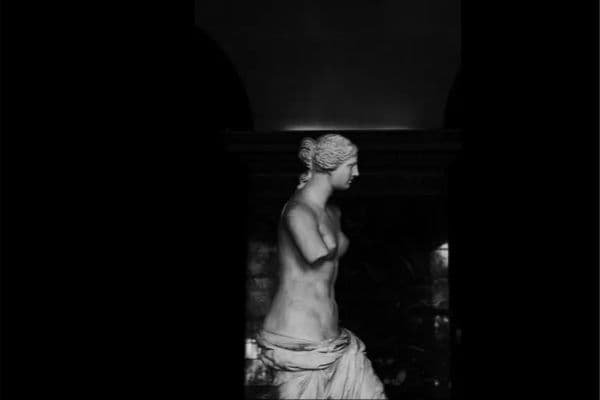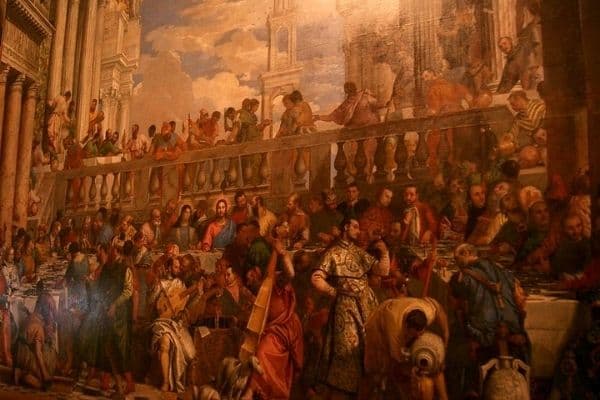Visiting Louvre Museum, Paris
Take time to visit Louvre museum Paris during your stay in France. Discover the thousands of art works present inside. Know Louvre museum timings, Louvre museum entry fee to have a hassle free tour of the Louvre.
Visiting Paris and not seeing the Louvre is not very pleasant idea. The Louvre is a must-see in the French capital. The Louvre allows visitors to discover ancient civilizations and Western art from the Middle Ages to the middle of the 19th century.
Beyond these numerous collections, it is also a masterpiece in terms of architecture. Seat of power for several decades, the Louvre invites you to discover the history of France, and more generally the history of the world.
Louvre Museum History
The origin of the Louvre dates back to the 1190s. At that time, Philippe Auguste decided to protect Paris by erecting a fortified wall.
However, the weak point of Paris lies in the junction of the fortification with the Seine. It therefore seemed essential to build a castle there. And to do so Louvre was born.
Gradually, the Louvre lost its protective function to become the residence of the kings of France. In 1528, François 1st (King of France) officially declared the Louvre as his main residence.
After the Revolution, all the regimes of France will reside there until 1870. The Tuileries will thus welcome the revolutionary committees with Robespierre, the Directory and the Consulate.
Following the revolutionary period, Napoleon settled there. After his defeat at Waterloo, it was then the turn of Louis XVIII, Charles X and Louis-Philippe to remain at the Tuileries. The architecture of the Louvre is revisited with each new sovereign.
During the Third Republic, the Louvre Museum was mainly occupied by State administrations. The art market being very competitive during this period, the Louvre experienced several difficulties, in particular the theft of the famous Mona Lisa in 1911.
But thanks to numerous donations, the Louvre saw its collections grow to become today, an internationally renowned museum.

Where is the Louvre museum? How to go to the Louvre Museum?
Louvre is right in the center of Paris, it is in the most prime location of Paris. It is located on Rue Rivoli, which crosses the capital’s first arrondissement.
There are several ways to reach the Louvre:
- Metro: this is one of the easiest ways to get around Paris. The Louvre-Rivoli stop is on line 1 or 7 and takes you directly to the museum.
- RER: If you are a little further from Paris, you may need to take the RER. By taking the RER A, B or D to Châtelet, you can then take the metro or walk for ten minutes.
- Bus: Wherever you are in the capital, several bus lines allow you to visit the Louvre Museum.
- Other more ecological ways may also be available to you; rent a vélib (public bicycle sharing system). There are several stations located next to the Louvre to park your bike. An electric scooter or walk and discover the treasures of the capital during your walk.
Once there, visit the Louvre Museum directly or take a tour of the Tuileries Gardens.
Louvre museum timings: Louvre Museum opening hours and prices
Louvre Museum remain open on:
The Louvre Museum is open from 9 a.m. to 6 p.m. Monday, Thursday, Saturday and Sunday. Wednesdays, Fridays and the first Saturday of the month, the doors close at 9.45 p.m.
If you want to avoid the long lines, go to the Louvre Museum as soon as it opens.
Louvre Museum closed on Tuesday.
Louvre museum ticket price / Louvre museum entry fee
For people over 18, the price of an entry is 17 €. For minors, residents of the European Union under the age of 26, people with disabilities, job seekers and history and / or art teachers, entry to the Louvre Museum is free.
To enjoy this facility you have to present the necessary supporting documents.
Tips for visiting Louvre Museum
As the Louvre Museum is very large, it is important to prepare your visit well. Beluga Travels reminds you of the most important points:
Remember to take comfortable shoes, because you will have to walk several kilometers during your visit. The Louvre Museum is indeed one of the largest museums in the world.
There are several dedicated places to take rest in between your tour. So do not get frightened.
It would take more than four days to visit the entire Louvre Museum, spending only 10 seconds in front of each work. If there are certain pieces that you absolutely want to see, plan your itinerary in advance so that you don’t miss a thing.
The museum is closing some of its rooms for maintenance work. Check beforehand which rooms are closed. So it will not come as a surprise.
What to see and do at the Louvre Museum? (Louvre museum tourist attraction)
The Louvre brings together thousands of works, each more exceptional than the next.
However, there are few must-see attractions that shouldn’t be missed when you go to visit the Louvre Museum. Beluga Travels selected the six most impressive works of the museum for you.

Mona Lisa
The Mona Lisa is obviously the most famous work of the Louvre Museum and perhaps even in the world. It was painted by Leonardo da Vinci at the beginning of the 16th century. The portrait of Mona Lisa serves as a reference for many artists across the globe.
Every day, more than 20,000 people visit the Louvre to see this portrait which conceals more than one mystery. Indeed, the Mona Lisa intrigues for her smile, her gaze, the identity of her model, and many other details.
So, if you come to visit the Louvre, go through the first floor and look for answers to the puzzles that surround the portrait of Mona Lisa.
Suggested Read : 9 Best Museums In Stockholm
The Venus de Milo
The Venus de Milo is a Greek sculpture dating from the Hellenistic period, over 2000 years ago. It represents goddess Aphrodite the goddess of Love hence, it was named Venus.
However, according to Roman mythology, Aphrodite is called Venus. For Milo, this is the place where the sculpture was discovered in 1820; the island of Milos which is located in the Cyclades in Greece.
Just like its current representation, the Venus de Milo would have been found on the island of Milos without her arms. This raised many questions regarding its transfer to France.

Liberty Leading the People
A representative work of France, Liberty leading the people was painted by Eugène Delacroix in 1830. It is the centerpiece of the Galerie du Temps.
Besides its artistic aspect, this painting has a very strong political significance. It was inspired by the Three Glorious Revolution.
Today, it serves as a symbol for the representation of the French Republic or of democracy. Always very current, it can also embody a revolutionary ideal during demonstrations.
The Hammurabi code stele
The Louvre is full of treasures. This is how you can admire the stele of the Hammurabi code.
It is a Babylonian legal text that dates back to the 1750s BC. At a height of more than 2 meters, you will be impressed by this stele. Found in Iran, it is the most comprehensive piece of legislation for the ancient Near East.
Besides the scriptures, you will see there a sculpture representing King Hammurabi facing the God Shamash who is the God of the Sun. This represents his investiture with the scepter and the ring.
The statue of Ain Ghazal
The Louvre houses works from all times and from all places. When you go to visit the Louvre Museum, discover the statue of Ain Ghazal which is the oldest sculpture in the building.
It is a statue with a shape dating back over 9000 years. It was discovered in Ain Ghazal in Jordan in 1985.

The wedding feast of Cana
An essential work of the Louvre Museum, the wedding feast at Cana represents Christ during a wedding meal. With this canvas, Paul Véronèse paints the miracle of Christ.
On the occasion of this Venetian wedding, he transformed water into wine. The painter introduces biblical characters and contemporary figures with a sacred setting.
This highly symbolic work is also impressive in its dimensions. Indeed, with 70 m², it is the most imposing canvas in the Louvre Museum.
